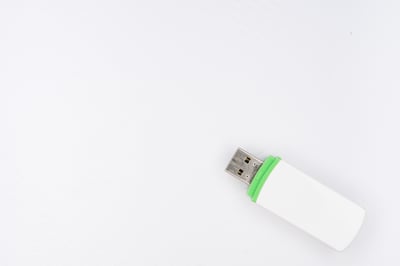
Document management seems like such a simple concept. Yet here we are daily, looking for the right document version in endless email chains. Typing in all the possible variations we can think of for the file we just can't find. Sending documents to each other via email and filesharing apps to get changes made and approvals given - all while under pressure to meet deadlines. We've stored all the information in shared drives, networks and emails, but we can't ever seem to find the right document at the right time. Sorry, but that's not document management.
What is document management?" Document management is a system or process used to capture, track and store electronic documents such as PDFs, word processing files and digital images of paper-based content. Document management can save you time and money. It provides document security, access control, centralized storage, audit trails and streamlined search and retrieval." - IBM
Simple, right? Yeah, nah. If you've ever spent time in any sort of business, you know that documents (physical and electronic ones) tend to pile up really fast. Proposals, quotes, presentations, contracts, project plans, designs, brochures, business plans, invoices, SOP's, SLA's...the list goes on. Before you know it, you have more of a piling system than a filing system. In the real world, the likelihood of you staying organised by filing every document in the correct place the second it comes across your desk is low. More likely is that you plan to do your filing when you get a minute - and when you get a minute, you do it as quickly as you can so you can get on with productive work. If this sounds familiar, you might be in need of PIQNIC.
To understand your own document and information management maturity, answer the following questions:
- Are ALL your documents and files available only to the people who need them, instantly?
- Are these available from a single search or linked (NOT COPIED) with your key line of business applications?
- Do have clearly defined roles established with access policies?
- Is your information secure? Like properly?
- Do you have storage and retention policies in place for information lifecycle and compliance?
- Do you have version control in place and does it work?
- Can you see a full audit history of a document that includes who and where it was shared?
- Can you find a single piece of information based on what it is, rather than where it is?
- Trick question: Do you know where your information is stored and who has access?
- Finally, who is in charge of your information?
 Each business has multiple documents that need to be kept safe, stored, categorised, accessed and shared in various ways for various reasons. How this system is managed hasn't changed much over time. If you think about how information is stored in your own organisation, your electronic storage is probably just a modernised version of a filing cabinet. In other words, the file needs to be named in a certain way, stored in a folder in a certain place which is then only usable if you know where to look and how to work the system. Like the Dewey Decimal Classification system, there is a lot of room for human error and it can be complicated to manage. Cloud-based systems are merely an electronic version of this, just with a more complex search function and remote capabilities. Imagine looking for one misfiled document with a system like this which has been built over many years by hundreds of people. Where would you begin?
Each business has multiple documents that need to be kept safe, stored, categorised, accessed and shared in various ways for various reasons. How this system is managed hasn't changed much over time. If you think about how information is stored in your own organisation, your electronic storage is probably just a modernised version of a filing cabinet. In other words, the file needs to be named in a certain way, stored in a folder in a certain place which is then only usable if you know where to look and how to work the system. Like the Dewey Decimal Classification system, there is a lot of room for human error and it can be complicated to manage. Cloud-based systems are merely an electronic version of this, just with a more complex search function and remote capabilities. Imagine looking for one misfiled document with a system like this which has been built over many years by hundreds of people. Where would you begin?
Your document management system should simplify your workflows and processes. The software should connect the information with the people working with it in an intuitive and uncomplicated system. It shouldn't require intricate setup or training for the teams that need to use it. So an alternative solution is needed, and that is why PIQNIC was developed.
What can a document management system do for you?
Most businesses and organizations do a lousy job managing information. This is evidenced in the fact that research found employees spend about 2.5 hours per day, or roughly 30% of the workday, searching for information. (AR Media) That's a third of a day that is unproductive, yet money is being spent. So the conclusion is with better information management, the result will be greater efficiency and higher productivity, which means time and money will be saved.
Migrating from antiquated systems to modern document management systems is a daunting prospect. Filing cabinets or online filesharing apps with thousands of documents just seem to be best left alone. But in the long run, the problem just grows. To reduce clutter, improve security, be more efficient and productive a robust document management system is required. It has to be said, that not all document management solutions are created equal. Some make the migration process simple and painless, while others overcomplicate the process.

Another aspect of modern document management that needs to be covered is the rise of the hybrid workplace. Documents need to be securely available online to your team, at any time. Additionally, the team needs to be able to collaborate and share documents in real-time. Smart companies are integrating their records management with workflows. Some software even go as far as automating repeatable tasks for you.
PIQNIC has revolutionised the way files are stored and found. With our software, you can look for a file by project or search by type or keyword. You can leave comments and assign them to a team member for action, and you can instantly see which version of a document is the latest. No more endless searches for the right file! Furthermore, your documents are safe and secure. With PIQNIC, teams, tasks and information live in one place. You can delegate tasks, get approval and set deadlines. Progress tracking for each task and each individual is easily visible to all team members. Messages are shared on the project itself. Tasks and processes can be set up for you, which means efficiency and productivity is increased.
So if your business is using anything that resembles a folder structure like a shared drive, OneDrive or GoogleDrive, that’s just storage, like the name says, “Drive”. Regardless of how disciplined you are, that’s not information management.
PIQNIC is scalable from small businesses with small teams, to large businesses with hundreds of users. To learn more about how PIQNIC can manage your document system for you, book a personal consult with one of our knowledgeable team.


What's your experience of working in this area? Let us know in the comments below: